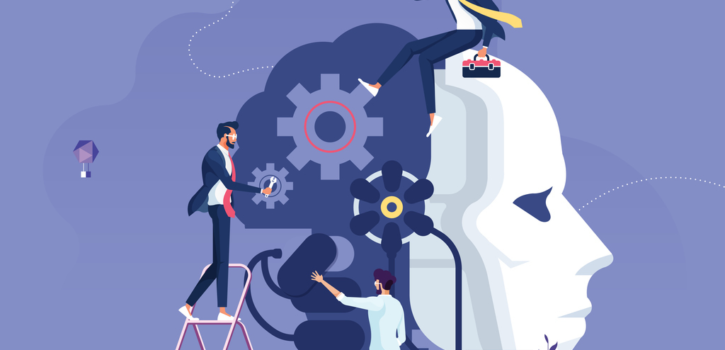How AI is revolutionising the translation sector
Artificial Intelligence (AI) has transformed a range of sectors, such as healthcare, recruitment, insurance and… translation. AI has made translating legal documents, websites, and user manuals much quicker. This access to AI is therefore good news for translators. However, there are risks involved in using AI in translation. Let’s take a look at them together!
AI-based machine translation tools
There are two kinds of AI-based machine translation tools:
- neural machine translation (NMT) tools
- statistical machine translation (SMT) tools
Neural machine translation uses neural networks and cutting-edge tools to translate sentence segments.
SMT, on the other hand, uses a parallel corpus to connect translations of different levels to each other:
- paragraphs
- sentences
- phrases
- words
This second approach is risky, as each recognised term is treated by the system as an isolated translation unit. That can lead to major inconsistencies, especially when it comes to translating words or terms outside their context.
Due to their superior reliability, neural machine translation tools (such as Google Translate, DeepL, ChatGTP and Amazon Translate) are the most widely used kind.
AI translation versus human translators
AI offers a number of advantages for translators and linguists.
Over time, when used in the translation process, its performance gets better and better. The resulting translations can even be reused. In TextMaster, for example, the MementoTM translation memory is used to store text segments in the form of translation units. Translators using the tool are therefore able to access both the original and the translated versions of segments whenever they want.
Artificial intelligence (AI) thus makes the work of translators and proofreaders easier.
Furthermore, this technology can also produce results in multiple languages from a single source text. It’s the ideal solution for dealing with time-consuming translations in which the same vocabulary reoccurs repeatedly. Similarly, AI can also be useful for providing medium quality translations at a high speed.
For technical articles, advertising slogans, CTAs and marketing texts, however, AI translation carries a certain risk.
The computer may misinterpret the source text and produce mistranslations or errors, or even omit things entirely. AI can stray dangerously far from the original message, or worse still, pose a risk to public health or personal safety. These kinds of errors can lead to crises if not corrected quickly.
Let’s look at an example together.
In 2021, the Spanish Ministry of Industry used machine translation to introduce an employee named Dolores del Campo. The CAT tool translated her name as “pain of field” in English.
The risks here were minimal. However, the error was very bad for the image of the Spanish government’s website.
A closer look at ChatGPT and translation
Can ChatGPT translate texts?
I recently asked it this very question.
Here’s the response:
“Yes, ChatGPT can translate texts. However, it’s important to note that the quality of the translation will depend on multiple factors, such as the complexity of the source text, the precision of the terms and expressions used, the availability of suitable translation resources, and ChatGPT’s ability to understand the context and overall meaning of the text.
In general, neural translation models such as ChatGPT are able to produce relatively high-quality translations, especially for everyday texts or common phrases and expressions. For more technical or specialised texts, however, it’s often preferable to employ the services of professional translators to ensure an accurate and reliable translation.”
As you can see, ChatGPT and I are in agreement.
AI translation saves time but is not synonymous with quality, particularly when it comes to translating texts of a more technical kind.
The limitations of AI translation
Companies that want to sell internationally tend to translate their e-commerce websites as part of the process of achieving this. What’s more, free services such as Google Translate and ChatGPT offer a tempting way for them to save money.
A word of warning though: these tools, though definitely useful, are not a replacement for professional translation services.
Google Translate can provide instant results in a number of languages, but these results are not always accurate (and most importantly, they are not SEO-friendly). Grammatical problems and inconsistencies are common, and more or less guaranteed in long texts.
A further obstacle to using neural machine translation is the limited number of languages translated. There are more than 7,000 languages in the world. Yet here are the numbers of languages that the best-known translation tools can translate:
- Amazon Translate: 137 languages
- Microsoft Bing Translator: 110 languages
- Google Translate: 108 languages
- ChatGPT: 100 languages
- SYSTRAN: 50 languages
- DeepL: 32 languages
The AI translation tool offering the greatest number of languages can only translate 1.96% of the languages spoken in the world.
AI: a limited revolution in the translation sector
The reason higher translation qualifications exist (such as CertTrans and DipTrans, and BA/MA degrees), is that translation as a discipline requires specific skills.
Professional translators bring a human touch to the work they produce.
Thanks to their technical skills and their minds, they are able to employ exact terms and deal with plays on words, parallels between concepts, and also jokes. They also have the ability to use a more formal or a more familiar tone, come up with evocative slogans in their mother tongues, and use local expressions, and so forth.
Even if AI has revolutionised the world of translation, it is still only a machine. Empathy, compassion and understanding of the target audience are uniquely human qualities.
And that’s without taking into account the fact that we can collaborate with the source text author. This means we can take their expectations into consideration during the translation process and use our analytical ability to produce a target text reflective of the original.
The results are generally incredibly accurate.
The best translation services for your website
Can’t decide whether to go with AI translation (e.g. Google Translate, ChatGPT or DeepL) or human translation for your website?
If you want to stand out from the competition, with sentences that make sense and are adapted for your audience, opt for TextMaster’s professional translators for results you can count on.
Though machine translations provided by AI may well give quick results, they will not necessarily create a good first impression.
What’s more, a single bad translation can be all it takes to tarnish your brand’s image.
So, whatever your business sector, reassure visitors to your online shop with an affordable professional translation!






